Learning how to adjust your ATV shocks might be the single most important way to improve your ride. After all, properly adjusted shocks can make every bump feel smoother, give you more traction, and give you better control.
The best part, though, is that the way to tweak and test your shocks is by going for a ride! Adjustments take no time at all, and you’ll feel the difference immediately. Talk about instant gratification.
But before we get into the nuts and bolts of making adjustments, we’ll break down exactly what it is that shocks do and how they do it. Knowing why you’re turning this knob or tightening that collar will help you make more sense of what you’re doing and ultimately make you a better shock adjuster.
So let’s dive in.
How Shocks WorkShocks are made up of two key parts:
These two parts work together, or rather against each other, to make sure you have a perfectly smooth suspension.
Springs are designed to keep your wheels on the ground. Hit a bump that sends your tires up and the springs compress so you don’t feel it. Then, they send your tires right back down so you maintain traction, acceleration, and control.
However, if you only had springs in your suspension, your ATV would constantly wobble and bounce like you were riding on a giant water bed. In practical terms, it would buck you like a bronco until you roll over or barf—whichever comes first.
That’s where shock absorbers come in. They’re the center part of your shock and consist of an oil-filled tube with a piston inside. There are valves in the tube that control how fast or slow the oil can move through the piston. The result is that it stops your spring and ATV from wobbling all over the place like a bobble head every time you hit a bump. Instead, it causes your springs to compress and decompress in a controlled way.
When they’re working together, you get all the benefits of a spring without any of the drawbacks.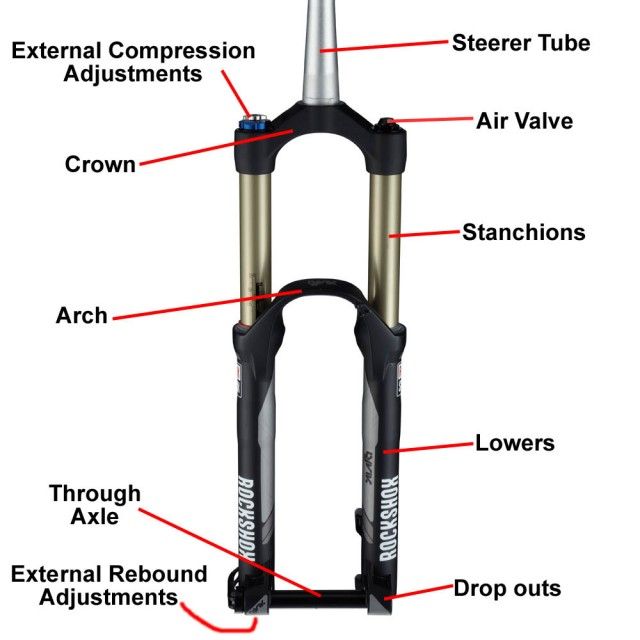 They keep your tires gripping the ground and make bumps smooth.
They keep your tires gripping the ground and make bumps smooth.
When they’re not working together… that’s when you have to adjust your ATV shocks.
Shocks use a spring paired with an oil-filled dampener to keep your ride cushy. The dampener keeps the spring from oscillating back and forth so that your quad is more stable. Setting the compression and rebound of the dampener can make or break the feel of your suspension.When it comes to actually adjusting your ATV shocks, there are a few tools at your disposal that are built into many shocks. The most prominent one is the clicker. This is the little knob, nut, or set screw that’s built into the top of the shock.
Clickers affect the flow rate of the oil through the valve inside the shock. When you adjust the clicker, you’re adjusting your shock’s compression (more on that in a bit). They adjust in small increments and make an audible click when you turn them, hence “clicker. ”
”
Different kinds of shocks have different clickers, too. Most just have a single adjuster that affects the overall compression of your ATV shock. Others have a high- and low-speed compression adjuster. The high speed adjuster will affect big suspension hits like landing a jump, while the low speed adjuster affects much smaller hits, like going through whoops or rocky terrain. Some shocks even have a mid-speed adjuster, but those are few and far between.
Most new ATVs have shocks that come with a single clicker on each shock. Factory shocks on older ATVs might have no clickers at all and can only be adjusted using the threaded collar on the shock.
Clickers like this one control the rate that oil can travel through your shock, which changes how fast it compresses. Getting your clicker adjusted to the right spot for you and your ATV is key to a good ride.So now that you know all the different kinds of clickers you could have, it’s time for you to get a handle on what compression actually is.
Compression, as the name suggests, has to do with how your shock compresses when you hit a bump or land a jump. This is different than rebound, which refers to the way your shocks act after they’re compressed.
When you’re trying to get your suspension to feel good, you’re mostly just trying to get the compression right. If you make your compression too loose, you’ll get that bouncy motion caused by your springs and you’ll end up bottoming out too often. That’s no good for your ATV or your back.
If you make your ATV shock’s compression too stiff, then you’ll start feeling every bump and rock on the trail—also bad for your back. And having it set too far either way will result in less overall control of your vehicle.
The best compression rate for most is one that will allow your ATV to almost bottom out on a hard hit, but not quite.
Hand in hand with compression is rebound. It’s the rate that your shock decompresses. Not every shock has a rebound adjuster, but if it does, the rebound set screw is located at the base of the shock.
This has consequences when set too low or too high as well. If your rebound is set so stiff that it rebounds slowly, your tires won’t make it back to the ground between whoops. They’ll compress once, then just stay compressed. As you travel through whoops, you’ll be nearly bottomed out the entire time, and you’ll lose speed due to lack of traction.
This is bad, obviously, since your suspension doesn’t really act like suspension at this point.
On the flip side, if you set your rebound too loose, you’ll get that bucking action that can send you ass over tea kettle whenever you hit a bump. Plus, your ATV will tend to bounce up and down even after a single bump as it tries to get back to its resting position. That’s no good.
The perfect position lets your shock rebound quickly without overshooting the equilibrium so that your suspension doesn’t bounce up and down before it settles.
Let’s talk about how to dial it all in.
Adjusting the Shocks on Your ATVNow we’ll go through the steps to adjust your ATV shocks to your heart’s content.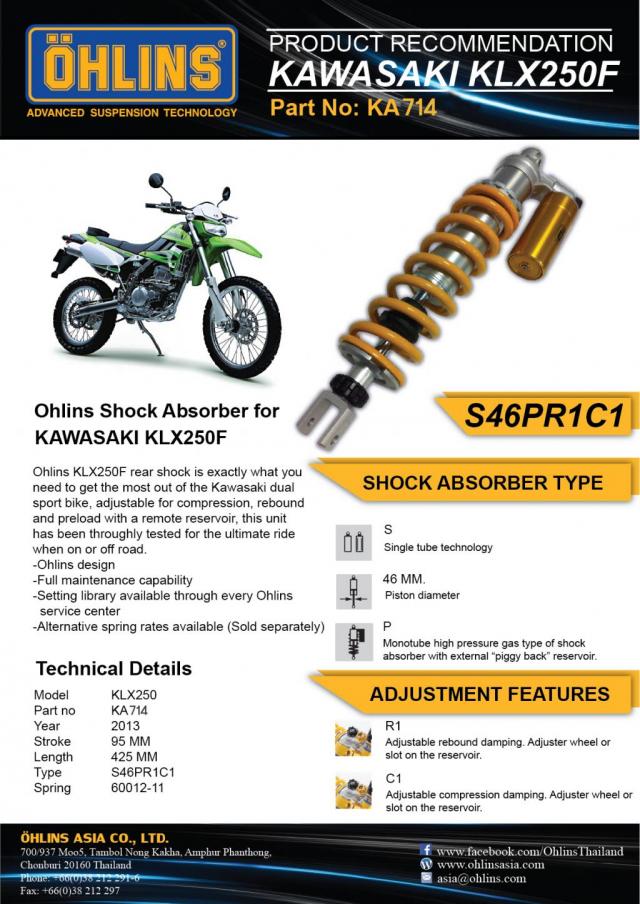 Tweaking is best done when you have quick access to a trail or ride area to test out your results. It might sound like a tedious process at first, but trust us—once you get started, you won’t want to stop.
Tweaking is best done when you have quick access to a trail or ride area to test out your results. It might sound like a tedious process at first, but trust us—once you get started, you won’t want to stop.
You need to make sure your tires are aired up to the proper pressure before you do anything else.
If your tires aren’t right, you simply won’t be able to adjust your ATV’s shocks properly. They’re the foundation of your suspension, and if they feel bad, no amount of tweaking your shocks will fix it.
The first thing you need to do to your shocks is set your ride height. This is done using the threaded collar or snail cam on your shocks.
First, if your shocks have a threaded collar, check your owner’s manual for the typical that you want to stay within when adjusting. Unless you want your front to be lower than your rear for some reason, you should try to keep the adjustments the same in all four corners.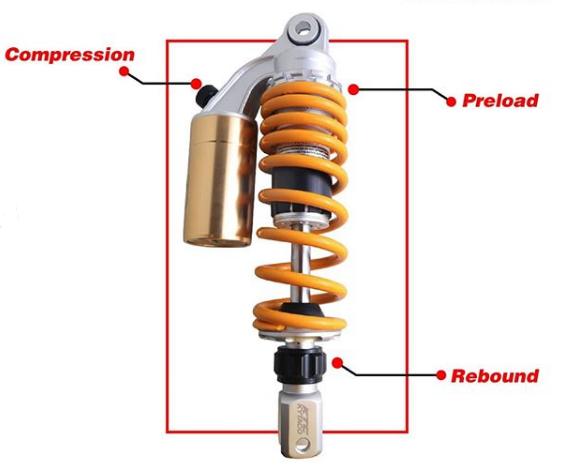
Then, with your machine lifted, loosen the locking collar on the top and thread the adjustment collar up or down. Tightening it down will increase ride height and give you a stiffer ride. Loosening it will lower ride height, giving you a softer ride. We usually recommend going with the lowest ride height that you’re comfortable with to start.
If you have a snail cam on the bottom of your shock, you will use that to set your preload. With a snail cam, the adjustments are opposite. So adjusting it higher will stiffen suspension and raise your ride height. Adjusting it lower will soften the suspension and lower your ride height. Again, we recommend the lowest height that you’re comfortable with.
Once you have your collars set and tightened up, it’s time to start adjusting your clickers.
You can use the double collars at the top of the shock to set the preload. Refer to your owners manual to make sure you don’t get it too out of spec.Adjusting clickers is where things start to get really fun. If you have high- and low-speed adjusters on your shocks, you should start with the high speed adjuster. This is the one that affects compression with big hits, like landing a jump. If you only have one clicker, you will adjust it just like the high speed adjuster.
If you have high- and low-speed adjusters on your shocks, you should start with the high speed adjuster. This is the one that affects compression with big hits, like landing a jump. If you only have one clicker, you will adjust it just like the high speed adjuster.
First, you need to find something that hits your suspension hard when you ride on it. Try to find something that you think is comparable to a typical hard hit on your average ride. We usually use a small jump.
Hit the jump. If your suspension doesn’t bottom out, turn your clickers two clicks counterclockwise. Remember: righty tighty, lefty loosey applies to your compression stiffness too.
Then, hit the jump again. Repeat the process of loosening your compression a couple clicks and testing it on a jump until your suspension does bottom out. Next, all you have to do is turn the clickers two or three clicks clockwise and you’re good to go. You’ll have nice, plush compression that doesn’t wreck your shocks.
 Adjust Your Low-Speed Clicker
Adjust Your Low-Speed ClickerIf you have a low speed clicker, adjusting it will take a little more finesse. You’ll need to find a section of bumps or whoops first, and take a run at it at a decent speed.
You need to pay close attention to how it feels. If you feel like you’re rolling forward and backward or left and right while you ride, that indicates that your low speed clicker is set too soft. If every single bump and rock makes your teeth chatter, then the clicker is set too stiff.
In these instances, you’ll need to set your clicker two clicks softer or stiffer and ride it again. Keep making those incremental changes and keep testing it until your ATV glides over the whoops without swaying too much or vibrating you to death.
Your rebound adjuster is located at the bottom of the shock. Like we mentioned earlier, it affects the rate at which your shock extends after it’s compressed.
The best way to test your rebound is to use a small jump, regardless of your ride style. When you land the jump, pay attention to how your suspension settles. If your ATV bounces up and down before it settles, your rebound is too loose. If it feels like your suspension stays compressed too long, it’s too tight.
When you land the jump, pay attention to how your suspension settles. If your ATV bounces up and down before it settles, your rebound is too loose. If it feels like your suspension stays compressed too long, it’s too tight.
It’s easier to adjust it properly if you start with it too loose—that is, with your rebound set screw or dial turned counterclockwise.
Hit the jump and feel your ATV bounce up and down. Turn your rebound screw clockwise a bit (sorry, no satisfying clicks on this one) and repeat. When you’ve adjusted it enough and your suspension pops up quickly without bouncing up and down, you’ve got it dialed in.
This is the baseline setting. You can go stiffer or softer depending on your unique riding style. You might want a stiffer rebound if you’re doing anything that’s slow and technical to make sure your suspension conforms to the terrain and doesn’t push you off a boulder too quickly. If you have a specific style that you enjoy, be sure to mess with rebound even more.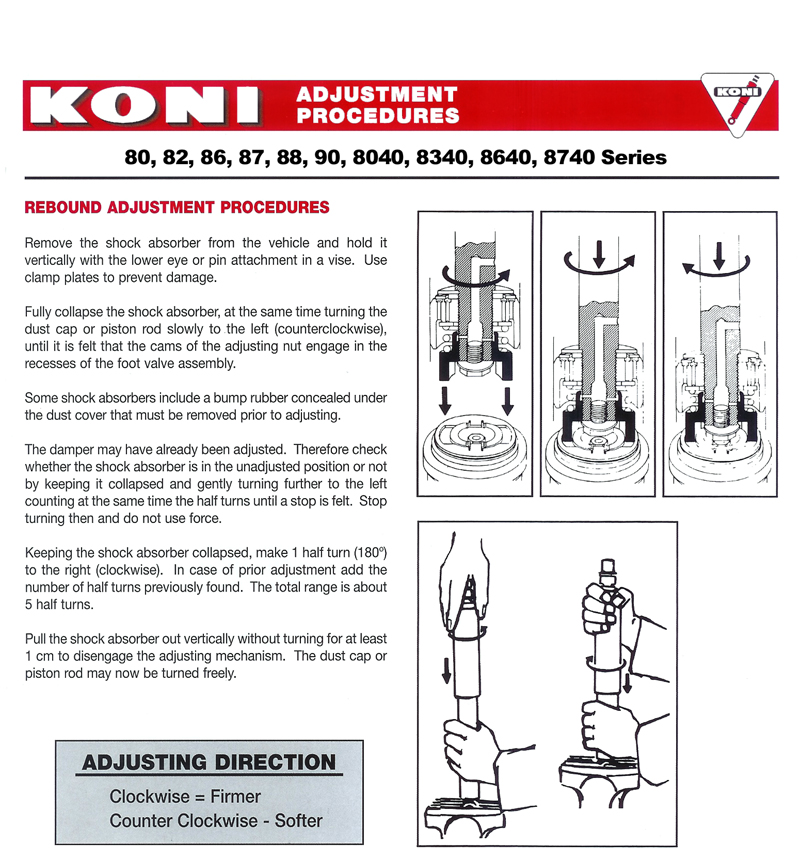
That’s all there is to it! With all your ATV shock adjustments made, you have the perfect combination of plush and performance. You’ll have excellent control and traction. And when you’ve put in all the work tweaking and tuning, you’ve really earned it. And it was fun, right? All you’ve got to do is ride and turn some knobs. Not bad at all.
RELATED CONTENT: shocks5
Share
84
Have you ever wondered how your ATV’s suspension works? Do you need to adjust or lower your ATV suspension but do not know how? Knowing how your ATV suspension works and how to adjust it is important, as it will allow you to enjoy better quality rides.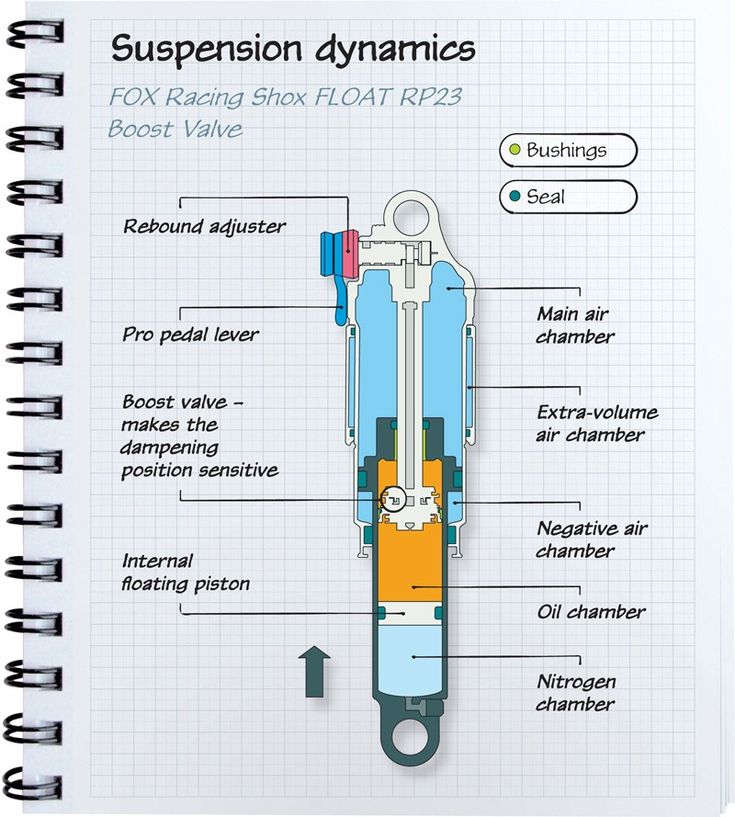
ATV suspension works by helping the quad stay stable on tough terrain. Shocks and springs help resist rapid compression and unstable bouncing. You can adjust the preload, rebound, and compression of your shocks to make your rider softer or stiffer and raise your ride height.
In this article, you will learn how your ATV suspension works. I will also show you how to adjust, lower, and soften it. Let us get started.
An ATV suspension helps your ATV vehicle get over rough terrain. Unlike a regular car’s suspension designed for pavement and flat roads, an ATV suspension is designed to help you drive off-road.
When driving off-road, you will encounter ruts, bumps, rocks, ditches, logs, branches, and various other obstacles that you just won’t find on-road. The suspension ensures that your ATV vehicle can drive over these obstacles and not get damaged.
A suspension, in simple terms, smoothes out your ride. If you are driving on smooth pavement, the suspension does not have to do that much. However, if you drive off-road, it takes a lot more work to smooth out the ride. That is why ATV suspensions are more complex.
However, if you drive off-road, it takes a lot more work to smooth out the ride. That is why ATV suspensions are more complex.
The suspension is responsible for other things as well. It makes sure that your vehicle is stable, even when driving on rough terrain. It consists of various parts that help it do its job, including springs and shocks.
I will go over what these components do in the next section, explaining exactly how your ATV suspension works.
As mentioned before, your ATV’s suspension has several parts that do several things to ensure your vehicle can drive smoothly, even on less than smooth ground.
I will go over several of these parts in this section. Although there is always a lot more to learn about how suspensions work, this section should give you a pretty good understanding of what your suspension does.
The two top things to know about are the springs and shocks. These shocks help absorb the force acting on your vehicle.
For example, when you drive over a rock, the shock absorbers help absorb the shock that your vehicle would receive. If they do their job well and absorb the shock, you will not feel it as much.
ATV shocks usually have oil in them. This oil helps prevent the suspension from compressing. There are various designs available. You might get a shock with an oil reservoir within the shock.
This oil works against the compression that comes with normal bumps and helps keep your vehicle stable.
Also, the springs help prevent compression. The springs’ job is to get your vehicle to “spring” back into its original position instead of being compressed when it goes over a bump or rut. If the springs are strong, your vehicle will not compress as much.
It will not bounce back and forth as much, as the springs will hold it back from that. You will not feel the bumps so much in your body as a consequence. Also, you will have additional ground clearance.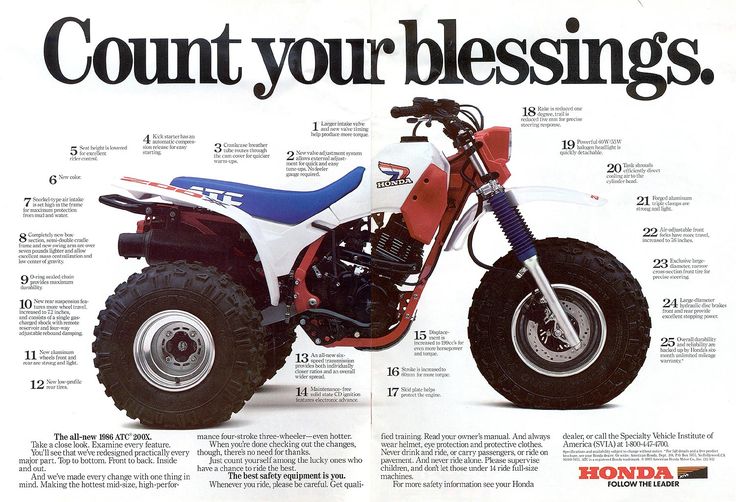
If your springs are old and weak, they will not do as good a job in resisting compression. Your ATV will compress more with every bump and rut. You will feel them more in your body, and you will have less ground clearance.
What you might not know is that there are several types of shocks on the market. Depending on which type of shock you have, you may be able to make certain adjustments. Some shocks do not allow you to make certain adjustments.
Here’s a helpful video to give a visual:
There are many types of shocks available. Right now, I will focus on two main types.
This type of shock has an oil reservoir built into the shock itself.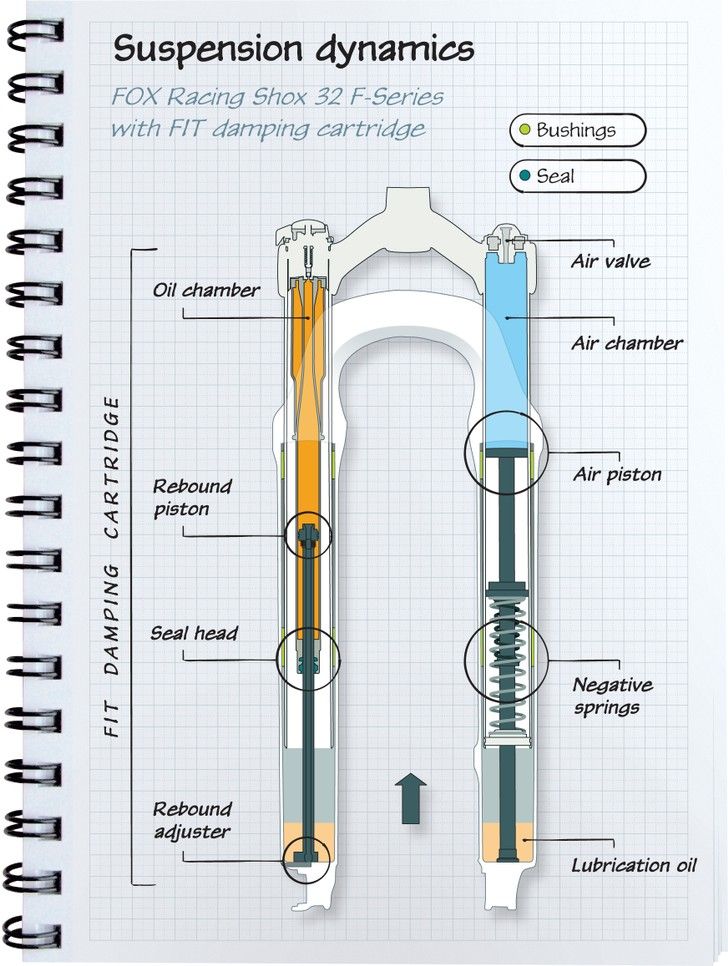 The problem with this kind of shock is that as the shock moves back and forth when you go over bumps on the road, the oil can heat up. The reason it can heat up is due to the friction of the shock’s movement.
The problem with this kind of shock is that as the shock moves back and forth when you go over bumps on the road, the oil can heat up. The reason it can heat up is due to the friction of the shock’s movement.
A monotube shock is the most common type of shock on ATV vehicles. If you have a standard ATV vehicle, you probably have a monotube shock. What is the disadvantage of this kind of shock?
When the oil heats up due to the friction of the shock’s movement, foam can form. This foam reduces the effectiveness of the oil and its capability of resisting compression.
However, some shocks have separate reservoirs. A remote reservoir is connected to the shocks by a tube. You can put a remote reservoir anywhere on your vehicle.
A piggyback reservoir is not located in the shock but right by it. It is normally attached to the shock; hence the term piggyback. However, since it is not inside the shock, it will not heat and foam up like regular monotube shocks.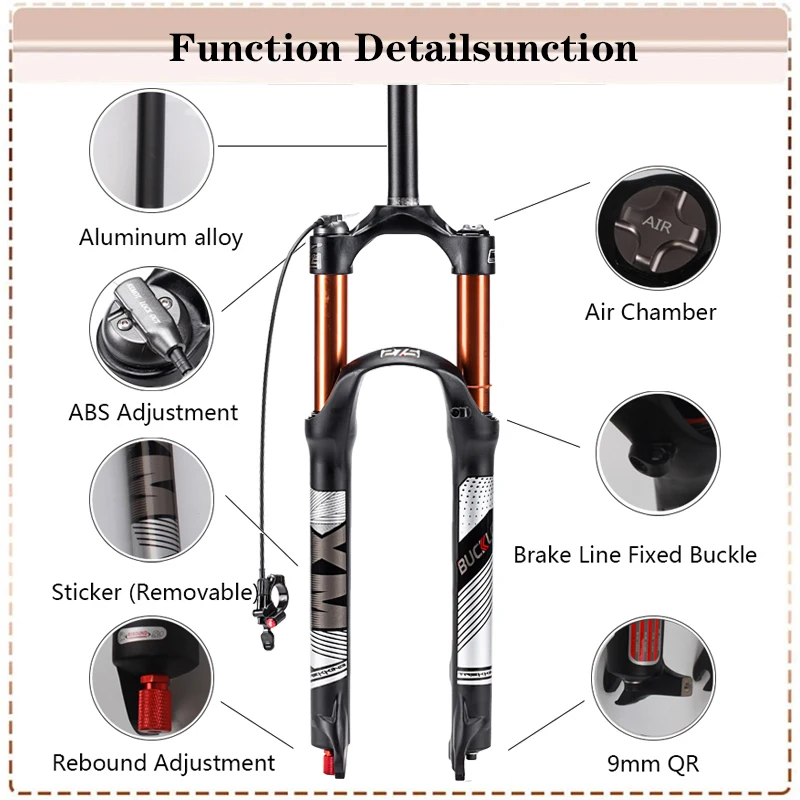
I mentioned that some types of shocks have different adjustability options. Let me go over that in the next section.
Generally, you can adjust the preload, compression, and rebound of the shocks. However, not all shocks allow you to adjust them in the same ways. I will explain what each of these adjustments is.
The first thing I will discuss is adjusting the preload of your shocks. The preload refers to how much pressure is put on the shocks by default. You will be able to adjust the preload on most shocks, even basic shocks.
Usually, there will be a collar on the shock, which will allow you to adjust the preload. However, not all shocks will have the same type of collar.
Some shocks will have a collar and locking ring that gives you more flexibility in how much preload you can put on your shocks. Other collars might only have five levels of adjustment.
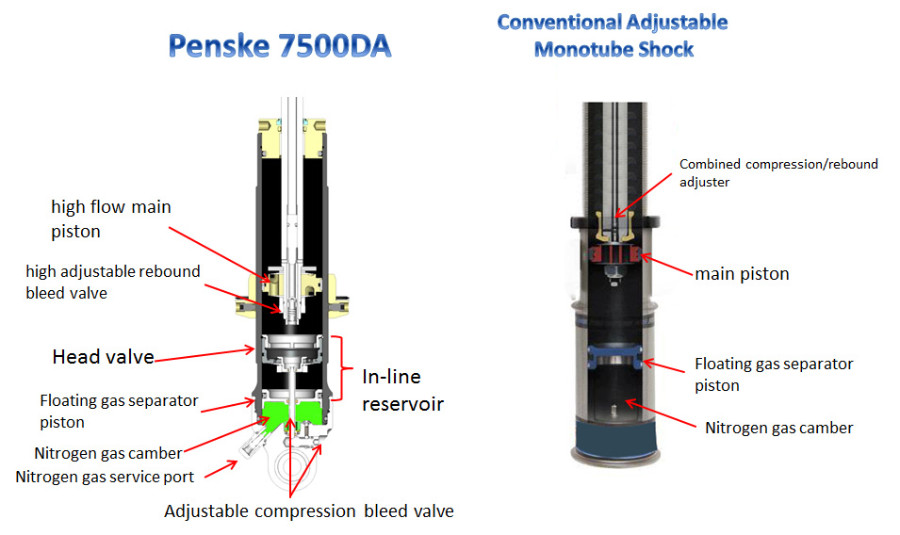
This adjustment is up to you. However, keep in mind that the softer the ride and the less preload, the more likely it is for your suspension to bottom out.
I would recommend that you raise your wheels and entire vehicle off the ground while adjusting the preload. It is simply easier to turn the collar that way.
Adjusting the preload might be the only way to adjust the compression – as I mentioned before, most shocks, even basic shocks, at least allow you to adjust the preload.
Some shocks will have double locker rings. To adjust the preload:

The next type of adjustment is compression. The compression helps prevent your suspension from bottoming out. It is the damping, and it controls the speed of the movement of the shock’s shaft into the body of the shock.
Adjusting the compression allows you to control the speed of the flow of fluid. If the fluid flows too fast, the shock might be too stiff. If it is too slow, the shocks can compress and move rather quickly, which can cause them to bottom out.
So, how do you adjust the compression damping? Usually, there will be an adjustment knob on the body of the shock. It might also be located on the shock reservoir.

There might be several adjustment settings. Usually, the shocks will have a needle valve system and not orifices. When adjusting a shock with a needle valve, you adjust the oil flow, which affects the compression.
I will say that for most shocks, even aftermarket shocks, there is no high-speed compression adjustment. As such, the adjustments you make to the compression damping will matter for small bumps and ruts, not large bumps.
What kind of adjustment is better? I would recommend keeping the oil flow nice and not too slow. Otherwise, the shock can bottom out. The tires will stay connected to the ground.
It will be easier to brake.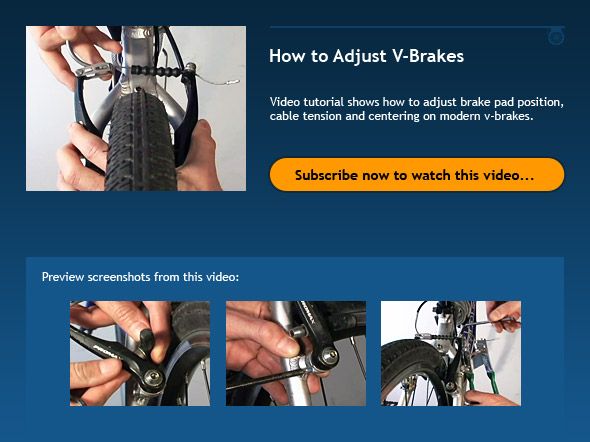 You do not want to make it too soft. You also do not want to make it too swift. You can adjust the compression based on the track or trailing you are driving on.
You do not want to make it too soft. You also do not want to make it too swift. You can adjust the compression based on the track or trailing you are driving on.
Finally, I will discuss adjusting the rebound. Remember, the point of the springs is to make sure your shocks rebound back into their original positions after compressing when hitting bumps or ruts. They can rebound quickly, or they can rebound slowly. That is what this adjustment is for.
If the shocks do not rebound quickly enough, and you keep hitting more bumps and ruts, they will have to compress again. However, to ensure that your suspension is working properly, it needs to compress and rebound after reaching a bump.
If it is not doing that, it will have lost all of its compression travel. It will not work properly, and you may feel your ATV moving quickly from side to side. That is not a lot of fun.
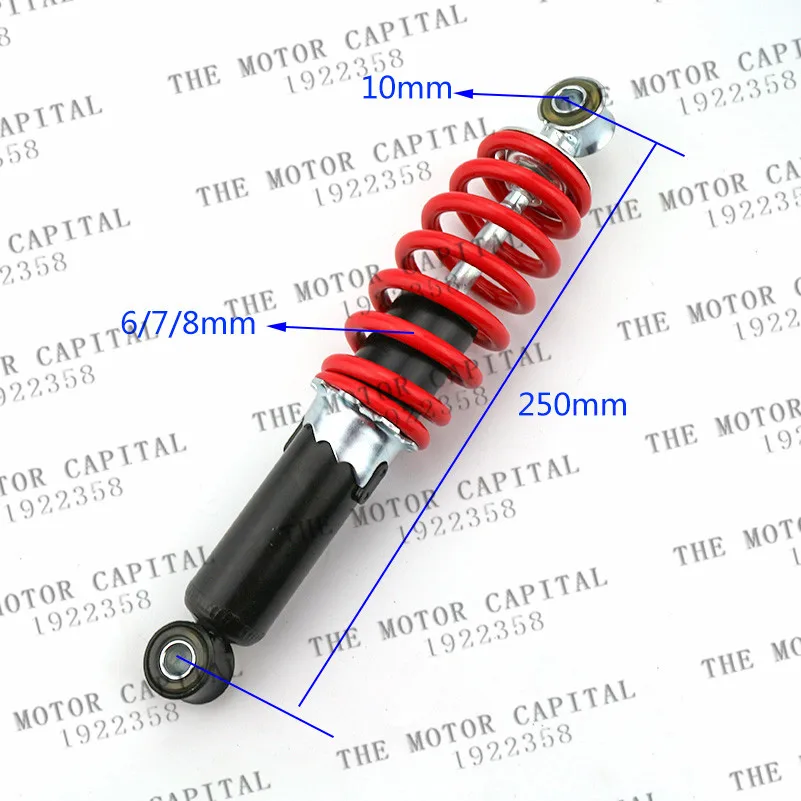
Either way, look for it on the rear shocks of your ATV. Your stock front shocks will probably not have this adjustment possibility, but if it is a second hand ATV with aftermarket front shocks installed, you may very well find this adjustment option on the front shocks.
I know that what I wrote here might seem confusing if you do not know much about suspensions and ATV mechanics.
That is why I am linking the following video, which should help you understand the basics of ATV suspension tuning:
Here is a video that explains the preload very well:
The best way to lower your ATV’s suspension is to buy custom shocks. However, you can adjust the ride height of your shocks as well by adjusting the preload. As mentioned earlier, if you raise the preload and have stiffer shocks, you will have a slightly higher ride height. If you want to lower your ATV suspension, lower the preload pressure.
As for softening the ATV suspension, that is also done by lowering the preload.
Before I close out this article, I will cover some of the most common ATV suspension terms you should know about. Once you know these terms, you will figure out how to work your ATV suspension.
The ride height refers to how high the seat of the ATV is. This height is measured at the time the rider is on the vehicle. That is why it is referred to as ride height.
This height is measured at the time the rider is on the vehicle. That is why it is referred to as ride height.
Camber refers to the tilt of your tires. If they are tilted in at the top and tilted out at the bottom, they have negative camber. If they are tilted out at the top and in and the bottom, they have positive camber. There are different levels of positive and negative camber. Why would you want a negative camber?
Tilting them out at the bottom will help increase traction when going through corners. More of the contact patch will have contact with the ground. If they have a positive camber and are tilted in at the bottom, you will lose traction on corners.
Free sag refers to how much travel the suspension has, considering only its weight and not the rider’s weight. That is how much the suspension sags under its weight. The weight of the ATV will lead to some level of compression and sag. Keep in mind that the front wheels’ free sag might not be the same as the back shocks’ free sag.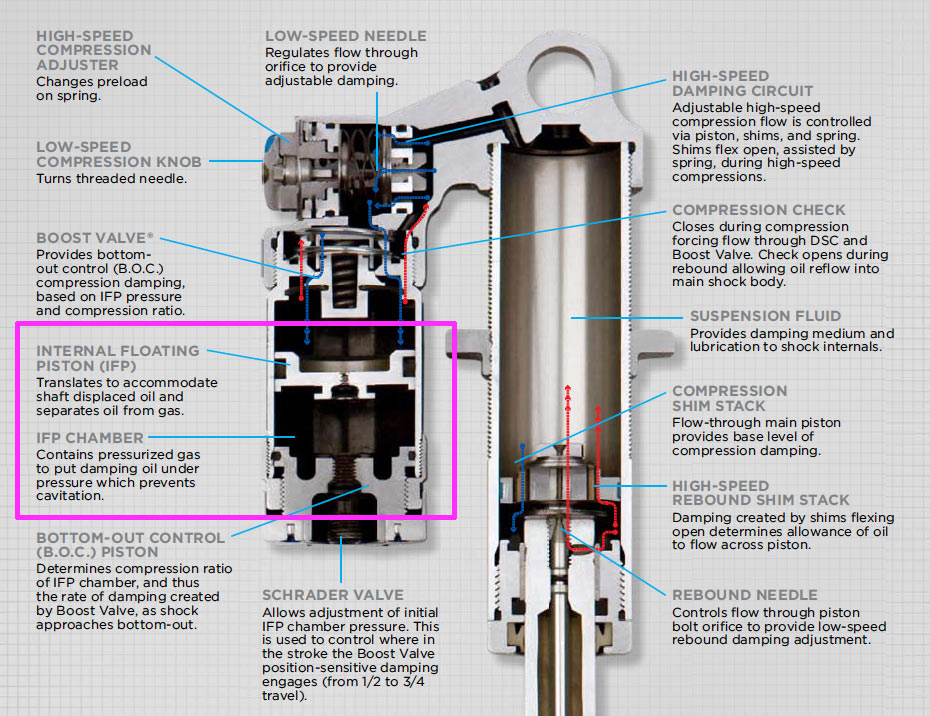
The front shocks are located on the front wheels and help them resist compression.
On the other hand, the rear shocks work on the back wheels and help them resist compression.
As opposed to free sag, rider sag refers to the amount of suspension travel used when the rider is sitting in the driver’s seat. Remember, this is not the total suspension travel that the shocks are capable of. Usually, it will be around a third or less of the total possible travel. The suspension will sag under the weight of the rider. It means that there is less travel that can be used when driving over bumps and rocks.
I mentioned bottoming out a few times. You want to avoid bottoming out when possible. Bottoming out refers to when the shock is completely compressed. When this happens, your body can feel it rather harshly, and you can get pain. By adjusting the compression to make it move slower, you can prevent the shocks from compressing completely and bottoming out.
I mentioned that you could adjust the rebound. If it rebounds too quickly and jumps up and down, it is bucking. In other words, the shocks are going up and down quickly to the point of being out of control.
At this point, I hope you understand a little more about what the shocks do and what their main components do. You should also have at least some understanding of the main kinds of adjustments you can make and why you might want to do them. The main adjustments to make are the preload and rebound adjustments.
Sharing is caring!
Have you ever read an article about ATV or Side-by-Sides and come across completely unfamiliar terminology? But what if you knew, let's say, that they are only about the thermohydraulic dissipation of kinetic energy? If this knowledge doesn’t make it easier, then it’s time to really understand the issue.
From the very first day, when you are just starting to study the chassis and suspension of your new “iron horse”, it can be easy to confuse a lot of new words and unfamiliar terms that seem to be familiar to absolutely everyone around. Moreover, knowledge (or not knowledge) of this terminology can help you improve your car (or, accordingly, achieve the opposite result). It’s worth understanding it in order to at least find the right suspension settings for your ATV or ATV.
So, in this article you will find a brief "dictionary" of key terms. Armed with new knowledge, you can unleash the true potential of your machines.
First, let's try to get acquainted with the types of settings and their names.
Spring preload: is the pressure setting (or preload) on the shock spring. A large number of basic shock absorbers have only this setting function. This adjustment is made using a female threaded ring on the shock body and a locking ring, which gives more adjustment possibilities, or a five-sided ring, the settings of which are limited to these five levels. Increasing the pressure makes the ride harder and increases the vehicle's ground clearance. Loosening the preload makes for a smoother ride, but can cause the car to hit the bottom of the track.
Increasing the pressure makes the ride harder and increases the vehicle's ground clearance. Loosening the preload makes for a smoother ride, but can cause the car to hit the bottom of the track.
This photo of a FOX shock shows how to preload the spring using the female ring on the top of the spring (turn clockwise).
Compression adjustment: this setting controls the movement of the rod in the shock body. There are two types of compression: slow and fast. There are two types of compression adjuster: adjusting knob or slotted screw head. These regulators control the flow of fluid into the damper. If the shocks compress too fast, you need to slow down the flow rate, if they are too stiff, you can speed it up. With strong compression resistance, breakdowns after a jump are prevented, the car behaves better when passing large irregularities. As for low resistance, the situation is reversed, the car will perform well when passing small bumps in the track, but strong jumps can cause problems.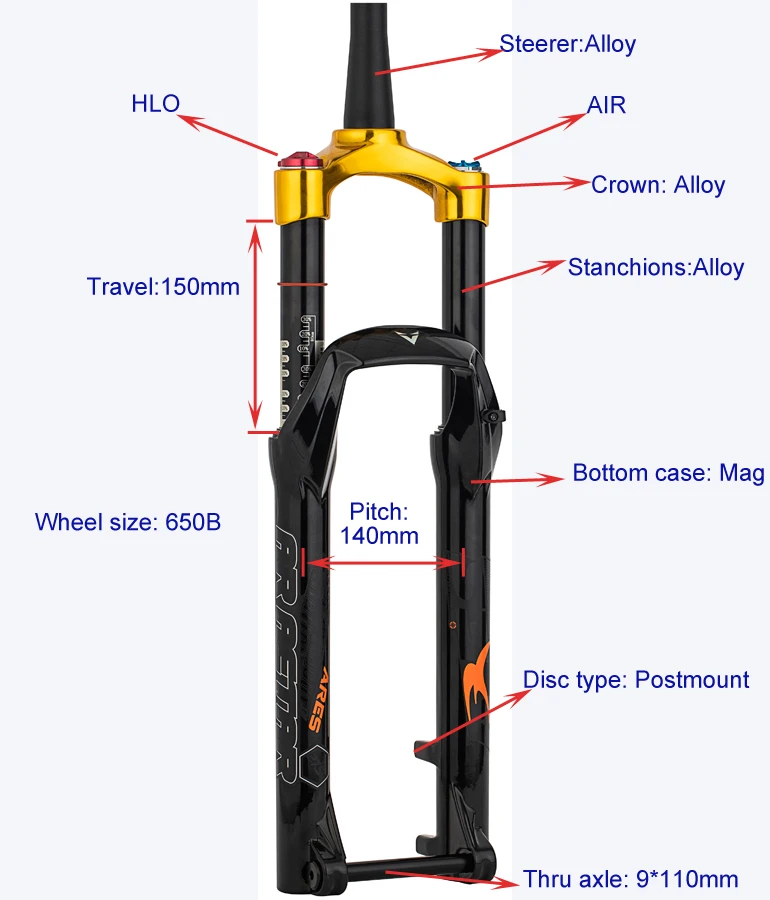 This setting is especially relevant for ATVs and ATVs, with it you can control the suspension when passing uneven terrain, make jumps.
This setting is especially relevant for ATVs and ATVs, with it you can control the suspension when passing uneven terrain, make jumps.
At this point, the driver can only hope that the damper settings are tight enough.
Rebound: this is the speed with which, after compression, the rod returns back to its original state - the one that was before compression. This setting controls the speed of this bounce. This will give you more control over your ATV or Side-by-Side as this setting ensures that the wheel is always in contact with the ground. Adjustment is carried out using a slotted screw or ring, which is twisted at the base of the shock absorber.
After the situation with the settings has become more or less clear, you can proceed to the study of the most common terms.
ground clearance: is the suspension height measured with a fully equipped driver and his equipment in the car.
Sag under weight (cars): this term defines the sagging of the suspension under the own weight of the car, without a driver.
Even the ATV's own weight (without rider) compresses the suspension slightly. This is called weight sagging.
Sag or Sag under driver's weight: this is the data on the full suspension travel when a fully equipped rider sits in/on the vehicle in the starting position. Usually, this value is 30% of the full suspension travel.
Pogoing: this term is used when the spring reverses too quickly due to certain settings and the shock absorbers, most often the rear ones, get the car's rear suspension out of control.
There are many varieties of shock absorbers - for every taste and budget.
Standard fixed: these are gas-filled shock absorbers that can be seen in budget models of ATVs. They are not regulated.
They are not regulated.
With spring preload: such a shock absorber can be found in sports cars for beginners or utility ATVs. The preload is usually adjusted by tightening the adjusting nut or loosening it.
Compression adjustable: often found in sports cars, such a shock absorber is most often equipped with a spring preload function. Such a shock absorber can be produced both with a nitrogen tank located on the side and without it.
You can see the pressure adjustment knob located on top of the King's piggyback receiver.
Compression and rebound adjustable: this type of damper will be fitted with a separately attached piggyback receiver or nitrogen tank. They will also feature preload rings, compression and rebound adjustment knobs. This shock will give the rider maximum customization options.
Pneumatic dampers: Air springs have been on the market for a long time, and the FOX brand has become one of the leaders in the industry. There is no spring or fluid in these shock absorbers, and their work is carried out due to air pressure. You can reduce overall machine weight and improve handling with less unsprung weight in the corners.
There is no spring or fluid in these shock absorbers, and their work is carried out due to air pressure. You can reduce overall machine weight and improve handling with less unsprung weight in the corners.
FOX is the world's leading air suspension manufacturer. With this FOX Float Evol, the adjustment possibilities are endless.
PiggyBack: this is a type of nitrogen-containing reservoir - a container that is attached to the shock absorber on the side or rear. It can be found in sport class ATVs and some Side-by-Sides models.
Remote receiver: some manufacturers offer shock absorbers with a remote nitrogen reservoir, which is connected to the shock absorber body by a nitrogen gas pipeline with a protective coating.
See all BRP models
The first is the spring rate, the second is the spring preload, the third is the rebound speed and the fourth is the compression speed. These are the main settings. By understanding how they work, you can customize any bike to suit your style.
These are the main settings. By understanding how they work, you can customize any bike to suit your style.
After we figured out what the suspension consists of - we need to set up the basic « setup "for yourself.
The first thing we need to do is find the right springs for our weight.
Second - adjust the spring preload. A lot of people are under the misconception that preload affects the stiffness of the springs themselves. Preload does not affect spring rate. It affects the height of the motorcycle. Increasing the preload, compressing the spring, we raise the bike. Reducing the preload, releasing the spring - we lower the bike.
In order for the motorcycle, together with the rider, fully equipped with all the protection: a motorcycle helmet, motorcycle boots, a backpack with a hydration pack, to squeeze the suspension to a certain height with its full weight.
This is the move where your suspension is compressed and is called sag .
Sag for each specific motorcycle is indicated in your instructions. On average, this value is approximately 100-110 millimeters for the rear suspension and 80 millimeters for the front suspension.
What is the sag for? It is needed so that your suspension can work in both directions, both up in compression and down when you are driving through some holes.
How to set up a sag? To explain briefly, we take a tape measure and measure the distance from our axis to the point above. A point on a fender or on a motorcycle is easiest to find by measuring the distance from the point on the swingarm from which you will be measuring to the footrest. We draw a parallel, find this point and measure it there. So the measurements will be quite accurate.
The front suspension is a bit more complicated. Not every bike has preload adjustment. On other motorcycles, you will have to change the springs, but there are still options with inserting washers and something like that, in general, here you can already see in the instructions for your motorcycle what you should do.
After we figured out the springs and set everything up correctly, we need to adjust the initial values for the compression and rebound speeds.
On the front suspension, this is done with such special " spinners ". The compression rate is usually written in English - " compression " or shortened to " comp ". The rebound speed is " rebound ". On the rear shock absorbers at the top we have the compression speed, and at the bottom we have the rebound speed " rebound ".
In order to get the basic settings, open the manual. Usually, all motorcycles are given basic settings in clicks - 10, 15 or 18 clicks.
Take " spinner " and turn it all the way clockwise. We screw and count the clicks in the opposite direction. If 15 respectively - 1,2,3, 4, 5 so up to 15.
So we do it with compression, with rebound, front and back. So, we got a bike with the right stiffness, with the right drive and with basic compression and rebound settings.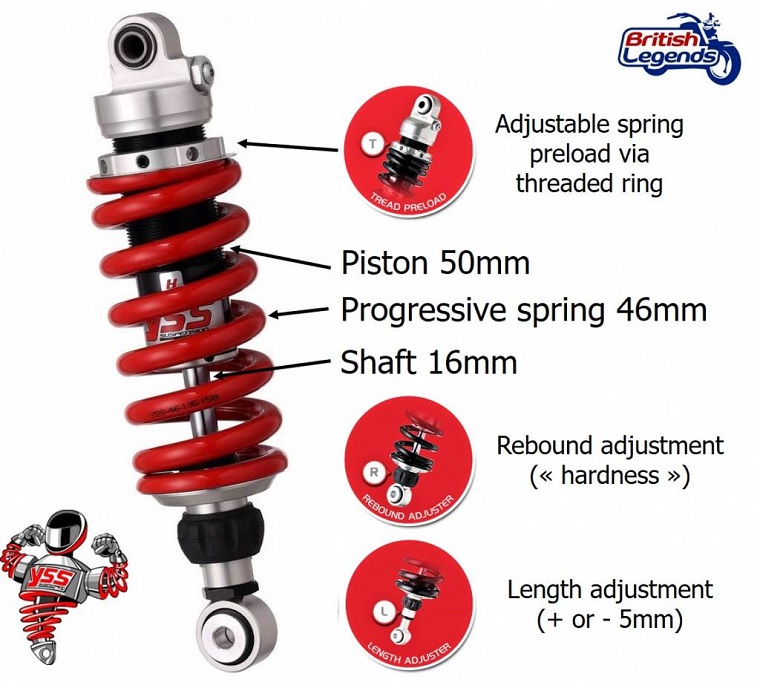 In principle, we have everything set up - you can ride. It will be much better than on a motorcycle from the factory or a used motorcycle that you took from the previous owner and it’s not at all clear what is screwed up, but this is only half the battle.
In principle, we have everything set up - you can ride. It will be much better than on a motorcycle from the factory or a used motorcycle that you took from the previous owner and it’s not at all clear what is screwed up, but this is only half the battle.
Why don't these settings suit us completely?
First of all, we are all different. We have different weight and different height. Even riders of the same weight and different heights can move very differently on a motorcycle. For example, a rider with a height of 190 cm and a weight of 90 kg. can transfer its weight in a much larger range, both backwards and forwards, and to the side. Changes the center of gravity of the bike accordingly and will need different settings relative to a shorter rider with the same weight.
Also, we all drive differently. In addition to a different skill, we have a different style. Someone attacks and flies into obstacles. He needs a stiffer and more energy-intensive suspension. Someone rides more smoothly and the speed of working out obstacles is more important to him.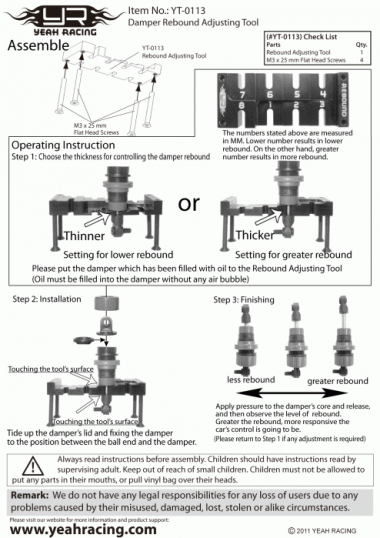 He does not need a rigid suspension, it will interfere with him. He goes slower and he needs the suspension to work out all the obstacles at a slow speed and not break through.
He does not need a rigid suspension, it will interfere with him. He goes slower and he needs the suspension to work out all the obstacles at a slow speed and not break through.
In general, we did everything in order to bring our motorcycle to the basic settings. Next - we take it, we go to the track you want to ride on, and adjust the suspension for a specific terrain. Immediately, of course, it is difficult to understand. Just start acting and experimenting and everything will come with time.
The hardest part is to understand what we don't like about the suspension. To do this, we need to understand what our compression and rebound speed settings affect.
Rebound or « rebound » this setting at which speed the suspension returns from the compressed state to the expanded state.
How does it work? If we drive on an uneven track, where the suspension constantly works on small bumps, it should work out as quickly as possible, otherwise, if the suspension compresses and does not have time to return to its original position, it will gradually “ is packed "to a compressed state.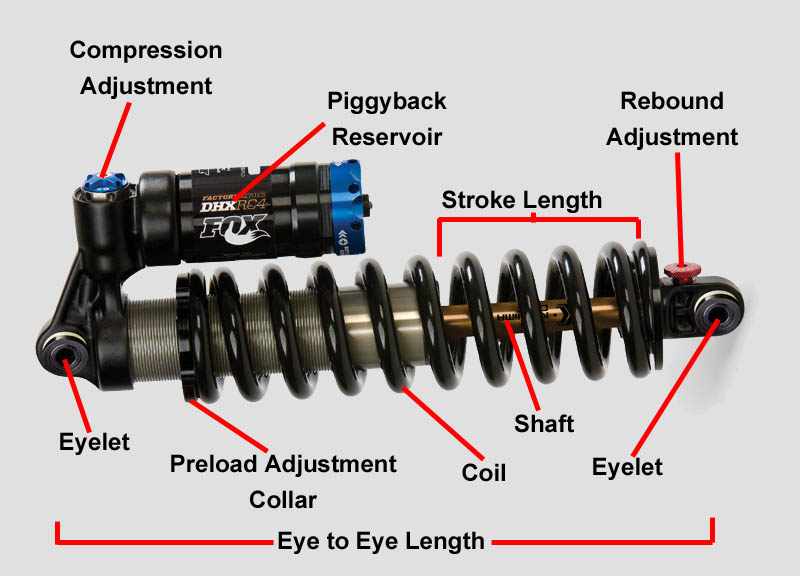
Suspension travel will also decrease at the end. In the end, it will just work out for you. If we make the rebound escape too fast, our suspension will shoot all the time and not have time to “ calm down ” and we will get a buildup.
For example, if you have a running track with gentle turns with jumps and landings, then you need to make the bounce slower. If we are on a strong departure, on landing, we fold the suspension strongly and sharply almost to the stop, then on a slow rebound it will have time to smoothly open up and you will continue to move. If you bounce too fast, the suspension will shoot up, the bike will bounce, and you will lose control.
How to understand this while driving? If you are driving on an uneven track and the suspension worked well for you at the beginning, and during a long drive you felt that it began to break through the suspension very strongly, then your rebound speed is too slow.
So, for tracks where there are a lot of roughness in the form of roots or stones, we need a suspension with a faster rebound so that the wheel has time to return to its original position and maintain the entire suspension range.
For running tracks with big obstacles, make the bounce speed slightly slower.
Everything works the same and for the rear suspension there is only one caveat and this is important, the rear suspension should not rebound faster than the front suspension.
The next setting is shock compression speed. What does it affect? On how quickly the suspension from its original state can collapse to full compression. The compression speed affects the feel of the stiffness of the suspension, i.e. if you have a very slow compression speed, the suspension will feel stiff. She will not have time to develop under obstacles. If we are talking about the front suspension, it will strongly give into your hands.
Rear suspension, respectively, the rear wheel will bounce from obstacles. We will lose rear wheel control and traction, and if our compression speed is too high, our suspension will fold too quickly and too much under obstacles, leaving us no margin.
The easiest way is to hang a tie on the front feathers and go. In the case of an inverted fork, if our coupler is very much lowered to the bottom of the traverses, then our suspension has already worked almost to the stop and we need to make the compression stroke slower.
If our coupler remains somewhere in the region of 50-60% of the total travel of our fork - accordingly, we need to make the suspension travel faster.
Conclusion: if, with the correct spring stiffness and correctly configured sag, we break through the suspension, we make the compression speed slower, turn it to the plus.
If, under the same conditions, our suspension is too “ oak ”, turn the setting “ compression ” to minus.
Now let's try to combine all our knowledge and draw some conclusion.
So what do we know now? That for rough trails we need a faster suspension with quick rebound and good compression, but also we can't make it too fast otherwise we get bounce and breakdown.
For high-travel trails, we need a slower setting so that after hard and full compression, our suspension has time to work out and slow down the spring without letting the bike bounce.
A very important point. When setting up, always turn only one adjustment, do not turn it from lock to lock. From your standard position, in order to feel the impact of the suspension, you can turn the clicks 5 to 8 in either direction. Then - roll and see if you are twisting in the right direction, and then return to the starting position and try the minimum number of clicks 1, 2 or 3.
Only after you understand one setting do you move on to setting another. Never turn both levers at once, otherwise you will get confused and not understand what effect a particular adjustment has given you, but all this is only true for a serviced and properly tuned suspension.